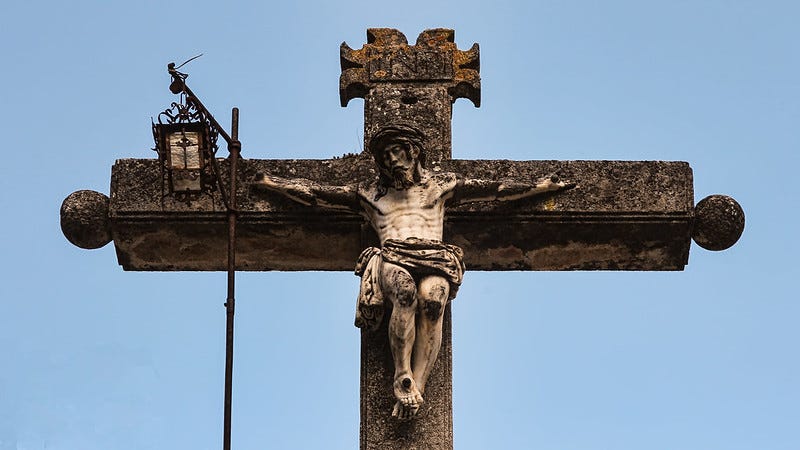Calendars, by their very nature, are reminders of important things we already know but that we risk forgetting in the business of life. One of the benefits of adopting the practice of following the Church calendar is the nearly constant reminders that come along with it.
Holy Cross Day, celebrated on September 14, is a perfect example of this.
On a day that falls squarely on the other side of the calendar from Good Friday, we are reminded again of the centrality of the Cross.
The Triune God revealed throughout the Scriptures is many things: Creator, Judge, Healer, Comforter, source of all Wisdom and Mercy. But at the center of this story is a crucified Savior, who took on the sins of the world.
Christians have done many things throughout the ages to ensure their lives are—at times quite literally—marked by the cross. Tertullian was known for making the sign of the cross on just about every physical object he interacted with. It was his way of ensuring that everything he did—from writing a letter to getting dressed—was done in light of the Gospel. In many churches, the congregation makes three small crosses using their thumb—one on their forehead, one on their lips, and one more over their heart—whenever one of the Gospels is read aloud. This is a physical reminder that the Good New of God in Christ is to be always on our mind, on our lips, and in our hearts.
When Christians began to build their own churches, the vast majority of them were designed with a cruciform layout. This is not the most practical of designs, but it did ensure that the people of God were cross-shaped when gathered together for worship. (This practice is still very much alive in many corners of the church today.)
There is also a rather impressive history of variants in the cross design itself, with each rendition signifying an important aspect of the Cross of Christ.
So, on this Holy Cross Day, how can you be shaped by the cross?
Habit to Adopt: Find somewhere to display a cross, perhaps where you need to see it most. It can be as simple as a sticky note on your dashboard, or an ornate crucifix in your study. Allow this visual reminder to orient your thoughts back to the forgiveness extended to you by God himself. Sometimes this is what we need if we have any hope of extending the same to others.
Historical Note: The origin of celebrating this Holy Day—which was originally called the Feast of the Exaltation of the Cross—dates back to the dedication of the Church of the Holy Sepulchre (Jerusalem) in AD335 by Emperor Constantine. Within a few decades of this dedication, this feast had also became associated with a growing number of stories that St. Helena (Constantine’s mother) had discovered the original cross at the Sepulchre. A 4th century Christian text is the first to associate the date of September 14 with both the discovery of that cross and the celebration of this feast.
To my earliest paid subscribers: thank you! I am greatly encouraged to by your support.





